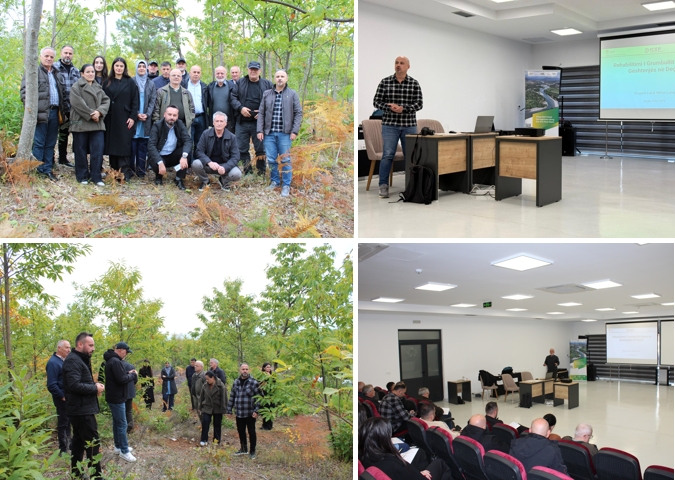News
Rehabilitation of Chestnut Forests in Deçan – A Successful Model of Integrated Forest Management

CNVP Kosovo, as part of the “Integrated Forest Management along the Drin River Basin” project funded by the Austrian Development Agency and ICEP, organized a workshop to present the successful rehabilitation of 5 hectares of degraded chestnut forest.
The process included thinning of the forest stand density, removing infected and dead trees, controlling chestnut blight without chemicals, building double fences to prevent erosion, and providing practical training to local communities and institutions. These efforts have resulted in healthier chestnut forests characterized by greater vitality, enhanced natural regeneration, and increased fruit production — despite the challenging conditions caused by drought.
Local communities, forestry experts and representatives from the Kosovo Forestry Agency (KFA), KFA Regional Directorate in Peja, Deçan Municipality, National Association of Private Forest Owners (NAPFO), Private Forest Owners Associations, all came together showing in this initiative of seeing the full rehabilitation process of the chestnut forest.
Intervention and Goals
The rehabilitation covered 5 hectares in the Chestnut forest, Deçan Municipality, aiming to improve degraded forest conditions, increase vitality of young trees, reduce infections by the pathogen Cryphonectria parasitica, and support natural regeneration of the chestnut ecosystem.
Silvicultural interventions included:
o selective and sanitary thinning to remove infected and dried trees;
o mechanical control of chestnut blight without chemicals;
o building double fences to prevent erosion and promote regeneration;
o practical and theoretical training for institutions and local community representatives;
o monitoring visits to evaluate impacts and strengthen this as a best practice model.
Results Achieved
The chestnut forest has shown great improvement after the rehabilitation work, including:
o Increased health and vitality of young trees even during dry conditions;
o A noticeable and immediate drop in infection pressure from cryphonectria parasitica;
o Improved forest structure, enhanced natural regeneration, and better fruiting already observed during the first year after thinning.;
o Active involvement of the local community, who now see this as a successful model to replicate in other chestnut forests.
This initiative is another step forward in protecting Kosovo’s natural heritage and building stronger connections between people and forests.
